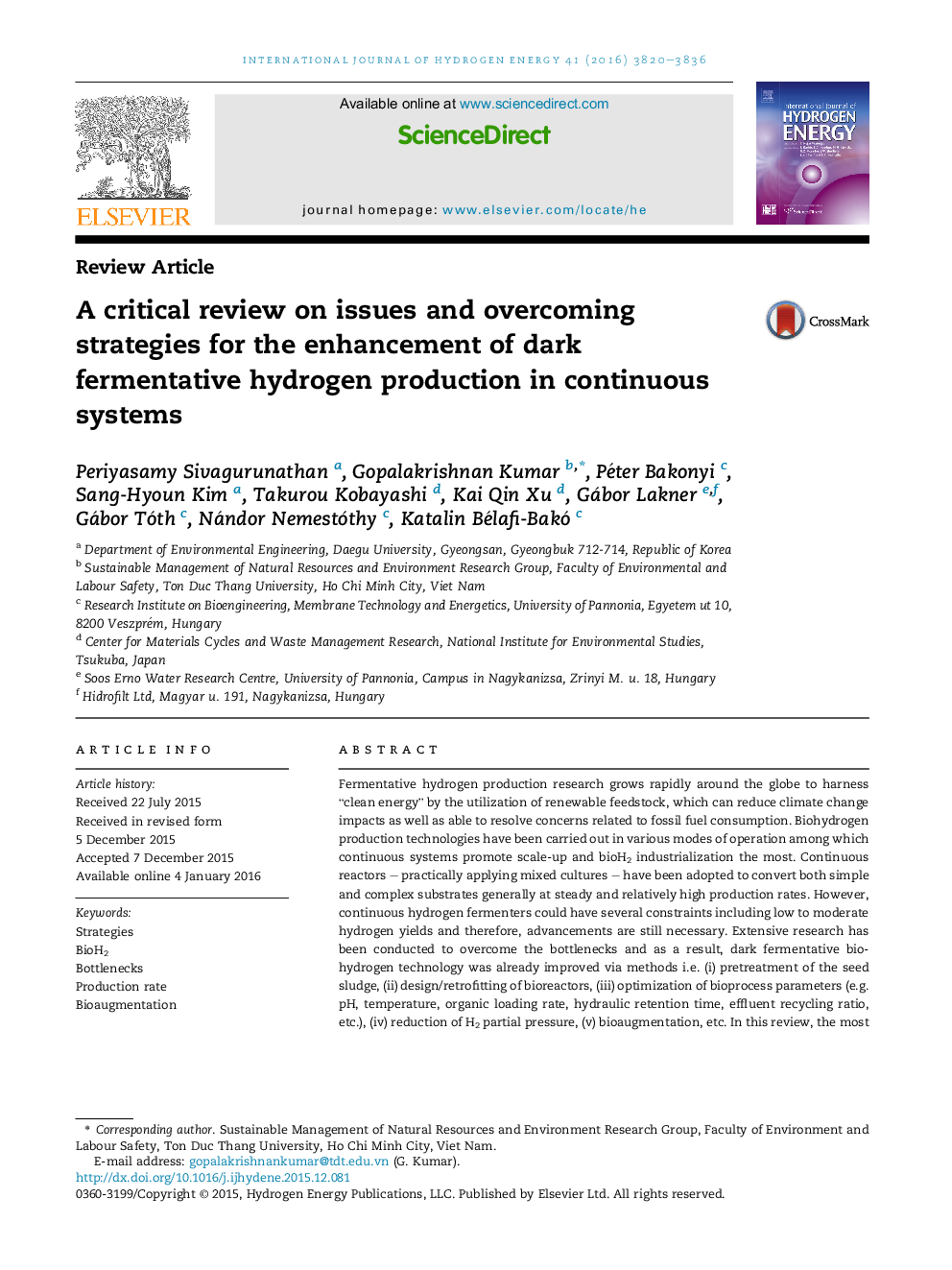| Article ID | Journal | Published Year | Pages | File Type |
|---|---|---|---|---|
| 1277911 | International Journal of Hydrogen Energy | 2016 | 17 Pages |
•Issues for continuous hydrogen fermentation are reviewed.•Overcoming strategies for dark BioH2 fermentation are proposed.•Combination of strategies should be researched for promotion of BioH2 economy.
Fermentative hydrogen production research grows rapidly around the globe to harness “clean energy” by the utilization of renewable feedstock, which can reduce climate change impacts as well as able to resolve concerns related to fossil fuel consumption. Biohydrogen production technologies have been carried out in various modes of operation among which continuous systems promote scale-up and bioH2 industrialization the most. Continuous reactors – practically applying mixed cultures – have been adopted to convert both simple and complex substrates generally at steady and relatively high production rates. However, continuous hydrogen fermenters could have several constraints including low to moderate hydrogen yields and therefore, advancements are still necessary. Extensive research has been conducted to overcome the bottlenecks and as a result, dark fermentative biohydrogen technology was already improved via methods i.e. (i) pretreatment of the seed sludge, (ii) design/retrofitting of bioreactors, (iii) optimization of bioprocess parameters (e.g. pH, temperature, organic loading rate, hydraulic retention time, effluent recycling ratio, etc.), (iv) reduction of H2 partial pressure, (v) bioaugmentation, etc. In this review, the most particular enhancement strategies of continuous hydrogen production are discussed to provide an up to date information about the latest developments made toward more viable applications.
